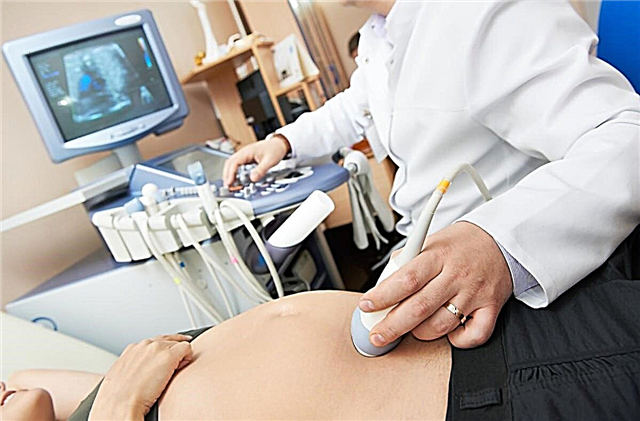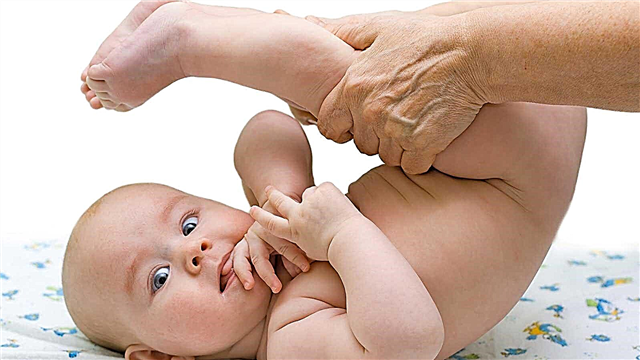
As soon as a woman sees a positive pregnancy test result, she is immediately interested in the issues of determining the due date and date of birth. Determining the gestational age is important both for the expectant mother herself and for her doctor, since this indicator is very important, it helps to track the development of the fetus in dynamics, changes in the mother's body. A pregnancy calculator will help you make an accurate calculation.

Principle of operation
The calculator is an accurate way to quickly find out the length of your pregnancy. It can be represented by an online service or an application that can be downloaded and installed on your mobile device - tablet or smartphone.
The calculator will show when it was approximately conceived, when to expect childbirth, and will also count down the days until this event, display the current date with an accuracy of a week and a day, and also give recommendations by months, by trimesters, by weeks.
In order to calculate the period, you need to specify only one date - the day when your last period began. By the date of the last menstruation, the dates and obstetricians are considered, and the method itself is called obstetric. Everything is quite simple in it - the first day of the last menstruation is the first day of pregnancy. Therefore, by the time of ovulation, a woman is already 2 weeks pregnant, by the beginning of the delay - 4 weeks, and 2 weeks after the start of the delay - 6 weeks. It - obstetric term, which is used by doctors when performing ultrasound, when prescribing tests and examinations. In total, normal pregnancy in women lasts about 40 weeks. The end of the 40th week is the PDD (estimated date of birth).

Determining the timing will not take long. It happens literally in seconds. As a result, a woman receives the maximum accurate and comprehensive information about what is her term, when to wait for childbirth, as well as additionally - useful and very informative articles on how the child develops at this time, what changes occur in the female body. A convenient table of dates by weeks and days will help you find answers to all your questions at any time.
It is not accepted in medical practice to count pregnancy from the date of conception. There is simply no way to set this date. Even if the date of ovulation is known (it was confirmed by ultrasound), conception can occur within an hour after the release of the egg, and within 12 hours, and within 24-36 hours. The egg cell can no longer live. Therefore, it is believed that the ovulation period is the only time when fertilization is, in principle, possible. From this period, the period can be considered, but only embryonic (gestational or actual). It is not accepted to consider pregnancy in it.
It is generally difficult to judge anything by the date of sexual intercourse, sperm cells have excellent vitality - up to 3-5 days they can retain their properties and vitality, being already in the female genital tract. Therefore, sexual intercourse, which led to the onset of an "interesting situation", could take place 3-4 days before ovulation, 1-2 days before ovulation, on the day of ovulation and after it within 24-36 hours. Agree swing per week is too big an error.

Irregular cycle calculation
If the cycle is not characterized by regularity and predictability, this does not affect the calculation of the period. The main thing is for the woman to remember when her last menstrual period began. And the duration of the cycle is a criterion that does not indicate a period in this case.
Another question is if a woman cannot remember the date of her last menstrual period. In this case, the calculator will not be able to determine its timing, as, indeed, the obstetrician-gynecologist at the reception. But the doctor has more opportunities to establish the truth: an ultrasound examination, blood tests for hCG will be prescribed. In the early stages, up to 10-11 weeks of pregnancy, ultrasound can be used to accurately determine the timing, because during this period all embryos grow at approximately the same rate. Later, when each baby begins to grow according to an individual hereditary program, determining the timing only according to fetal fetometry data will be an imprecise and difficult matter.
In the first trimester, hCG indicators can also tell about the approximate time (the accuracy of the blood test is significantly lower than with ultrasound scanning). At home, even with the help of an electronic test that shows not only pregnancy, but also its term, it will be difficult to establish exact dates. h
The test reacts to the concentration of hCG in the urine, and the higher it is, the longer the system shows. But errors can arise due to violation of the rules for conducting self-diagnosis, due to hormonal deficiency.

After IVF
If a woman's pregnancy did not occur naturally, but with the help of doctors in the IVF treatment protocol, then using an ordinary calculator will not work, because in IVF it is not the date of the last menstrual period that comes first, but the date of embryo transfer into the uterus. For such ladies, there are separate counters that offer to select the date of embryo transfer in a special field, as well as indicate their embryonic age (three days, four days, five days).
Many people think that IVF affects the rate at which the embryo develops. It's a delusion... Embryos that are obtained by embryologists after fertilization of a female egg in the laboratory grow and develop at the same rate as embryos conceived by parents without medical intervention.
If a woman had regular menstruation before the protocol, she can use the regular calendar and obstetric counting, but only if if the date of embryo transfer approximately coincided with the time of natural ovulation, if it was. It is quite difficult. A big plus on the side of future mothers - "eco-women" - they know exactly the date of conception of their child. It's on their medical record. Two weeks are taken from her and the obstetric term is obtained, the same as for everyone else.
In this case, the reproductive specialist who observes the pregnancy will consider strictly the embryonic period, and the gynecologist - obstetric. In order to come to a common denominator, a woman undergoes confirmation examinations several times - an ultrasound scan in the early stages, a gynecological examination, in order to prevent discrepancies and confusion.

Other methods
There are other, less accurate ways to calculate deadlines. For example, by the movements of the fetus. Previously, this method was widely used by obstetricians, but with the advent of ultrasound diagnostics, the need to record the date of the first movement has disappeared. By this method, the date of the first movement during the first birth falls on about 20 weeks of gestation, and for repeated births - at 18 weeks. In the first case add exactly 20 weeks and get the estimated due date, and in the second case add 22 weeks for the same purpose.
The method is difficult to consider accurate, especially in primiparous. Due to the lack of experience, expectant mothers expecting their first child often confuse the first movements with intestinal peristalsis, and are not immediately able to realize what is happening.
The opposite situation is also possible - peristalsis is perceived as movement. Today this method is not used in medical institutions.




